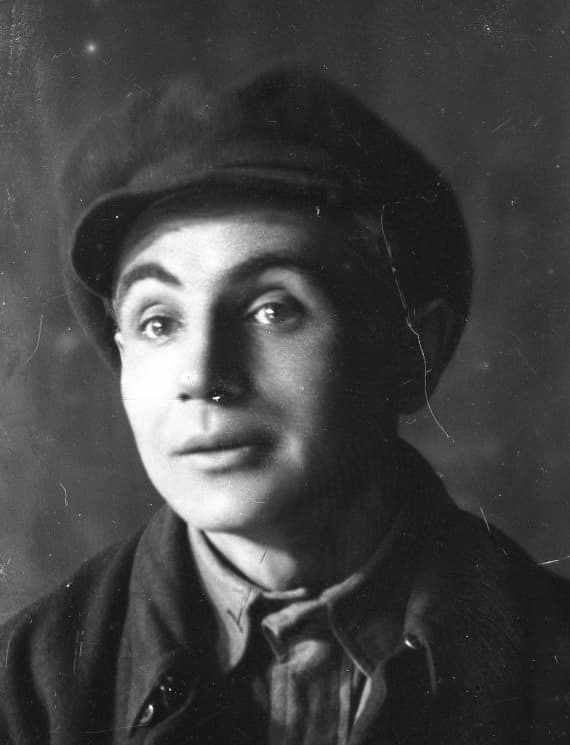Three Pictures of Struggle and Victory
Text by the 1st Workshop under the artistic directorship of Les Kurbas
Premiere: November 7, 1922
Director: Les Kurbas
Artist: Vadym Meller
Cast
Iryna Avdiievna
Danylo Antonovych
Hanna Babiivna
Borys Balaban
Pavlo Bereza-Kudrytskyi
Olha Havrylenko
Lesia (Olha) Datsenko
Mykhailo Domashenko
Oleksandr Zaporozhets
Hnat Ihnatovych
Andrii Yrii
Favst Lopatynskyi
L. Komaretska
Serhii Karpenko
Hanna Kovalenko
Mytrofan Kononenko
Varvara Kostenko
Petro Masokha
Olena Mahat
Matviieva
Ryta (Kharytyna) Neshchadymenko
Kateryna Nedoharko
Parfinenko
Zinaida Pihulovych
Natalia Pylypenko
Les (Oleksandr) Podorozhniy
Antonina Smereka
Semen Svashenko
Yevheniia Sulko
Vasyl Stetsenko-Bidnyi
Nadiia Tytarenko
Borys Tiahno
Trylis
Valentyna Chystiakova
Serhii Khodkevych
Oleksii Khodymchuk
Stepan Shahaida
October was the Berezil Artistic Association’s debut production. It was a 40-minute pantomime in two acts created by Les Kurbas using the “method of collective action.” The show was timed to the fifth anniversary of the October Revolution.
After seeing the show, director Mykhailo Verkhatsky said: “The time and place of events is unknow: maybe it’s Europe, maybe the mid-19th century, or maybe it’s during the imperialist war. On stage there is a king and of course he is the worst king you can image – a lazy old libertine… just like all this royal entourage. They abuse the poor badly. His subjects revolt and kill the king with the help of one of the king’s favorites, who has an affair with the rebel leader.”
Yosyp Hirniak described the pantomime choreography as such: “Ministers, generals, court ladies dance the popular padespan. The nobility – powdered, hair done, luxuriously dressed but resembling wax figures – dance long and hard.”
Actor Oleksandr Zaporozhets recalled: “There was an organic combination of expressionist excitement – with almost farcical irony (the scenes with the king, for example, who drank fancifully like a jester!) and melodrama – and parody. What October was missing was jubilee and pathos, which some fans of ‘theater of mass spectacles’ liked so much. Тhis was true art! And it’s important that it was made by young people who were inspired by artistic ideas and who were physically accomplished people: their physical beauty and defined actions also deserve merit.
October was a brilliant production that was underappreciated by critics of the time – and even Kurbas himself.
The task of constructing a propaganda show with a very clear ideological focus was achieved through a high level of artistic skill.”
October and Berezil’s next production (Ruhr) were considered blueprints for its flagship show – Gas – which premiered the following spring of 1923.

